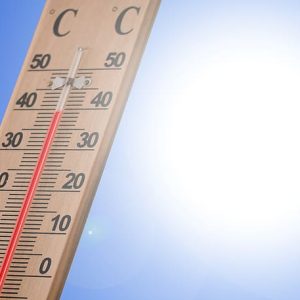A 58-year-old construction worker collapsed and died in the ongoing heatwave on a building site in the town of Atina, near Frosinone, on Friday morning. It was the second heat-related death on a construction site in the province in just three days.
The man had been working on the installation of a new fibre optic network along Via Randolfi when he suddenly fell ill and collapsed around 10am. Emergency medical staff from nearby Cassino arrived swiftly but were unable to save him. He died on site.
Carabinieri from Atina have launched an investigation into the circumstances of the incident, which has once again raised concerns about worker safety amid the ongoing heatwave.
Ongoing heatwave claims at least nine lives
The fatality occurred as much of Italy continued to bake under a fierce heatwave that has already claimed at least nine lives. Twenty cities across the country were placed on red alert on Friday, including Frosinone, Rome, Milan, Florence and Palermo. A red alert signifies that the heat poses a health threat not just to vulnerable groups, but to the general population.
Health Minister Orazio Schillaci said on Friday that a special emergency control room is now operational to coordinate the national response. It includes representatives from the Health Protection Department, Civil Protection, the Lazio Region’s Prevention Department, and workplace safety agency INAIL.
In response to rising fatalities and growing pressure from unions, the government signed an agreement with employers and trade unions at the Labour Ministry. The protocol bans outdoor work during the hottest hours of the day and will be enforced through an emergency decree.
Relief may come this weekend, as torrential storms are forecast in parts of the country, especially in northern regions where atmospheric tension has built up due to the extreme heat.ç
2024 was the hottest year on record
According to a new report released Friday by the SNPA (National System for Environmental Protection), 2024 was the hottest year on record in Italy. The national average temperature rose by 1.33°C, while minimum temperatures increased by 1.4°C compared to the 1991–2020 average.
Rainfall patterns have also shifted. While northern Italy saw 38% more precipitation than usual, the south and major islands experienced an 18% drop, worsening water shortages.
Agriculture suffering in heat
Meanwhile, the agricultural sector is also reeling. Farmers are reporting scorched crops and heat-stressed livestock. Melon crops, a hallmark of Italy’s summer, have been particularly affected. Milk production has dropped by up to 15% in some areas, such as Lodi in Lombardy.
“We won’t be able to recover what we’ve lost,” said Michele Grugni, a dairy farmer in Cervignano d’Adda told ANSA. “Even if temperatures fall, the damage is already done.”





